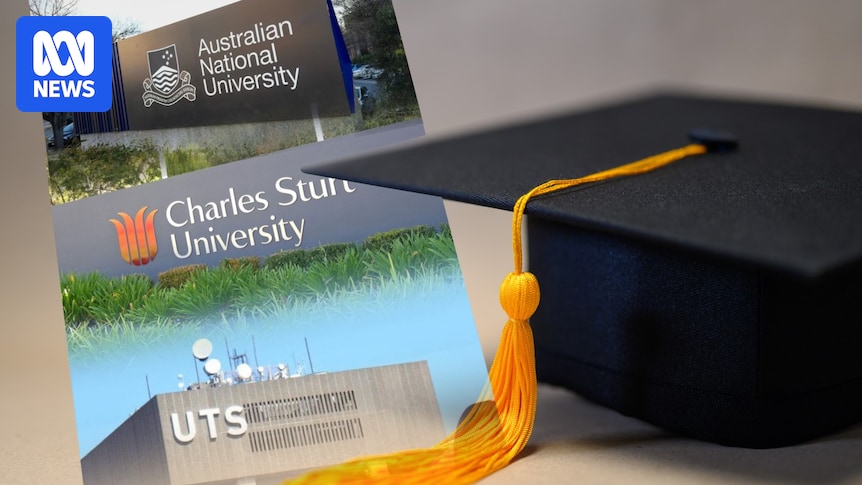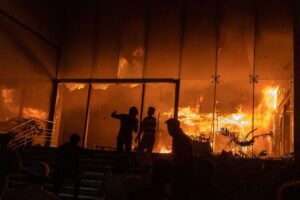
Physicist Ivan Maksymov from Charles Sturt University is among an estimated 3,500 university staff nationwide facing job losses as the Australian higher education sector grapples with a severe crisis. This marks the second time in three years that Dr. Maksymov has been laid off, leaving him struggling to sustain his career and support his family.
“It derails my career. I’m the only breadwinner, so it’s the only source of income and we have two kids to feed,” Dr. Maksymov lamented. Despite having earned a prestigious Future Fellowship from the Australian Research Council, he now finds himself navigating a “humiliating” redundancy process that he claims exposes the “ugly underbelly” of the sector.
Universities Under Financial Strain
The challenges faced by Dr. Maksymov are not unique. Universities across Australia are cutting costs, citing a dramatic 90% decline in international student numbers over the past five years as a primary factor. Charles Sturt University, like many of the country’s 39 public universities, has been forced to make tough decisions.
In a statement, a spokesperson for Charles Sturt University expressed regret over the staff reductions, acknowledging the distress caused by the process. “Charles Sturt University deeply regrets the need to reduce its staff numbers and the impact on those whose jobs are proposed to be disestablished, including Dr. Maksymov,” the spokesperson said. “But the necessity of these actions is undeniable.”
However, Dr. Maksymov criticized the university’s handling of the redundancy process, claiming it maximized distress and offered little room for genuine consultation.
Union and Management at Odds
The National Tertiary Education Union (NTEU) has voiced similar concerns, accusing 22 universities across five states and territories of cutting a combined 3,578 jobs between 2024 and 2025. Dr. Alison Barnes, the national president of the NTEU, described the situation as a “dark cloud” over the sector.
“I think people are feeling disheartened, demoralised. It’s like a dark cloud hanging over our workplaces and people are not coping with the uncertainty and the stress,” Dr. Barnes said.
The redundancies follow a series of issues, including casualization, wage theft, and spending scandals that have prompted senate inquiries into university governance. Dr. Barnes and the union argue that the latest job cuts reflect poor management practices.
“It’s a crisis which has many different facets. Over $700 million being spent on consultants in one year, it’s the job losses which impact on our capacity to educate and support our students,” Dr. Barnes stated.
Management’s Perspective
Not all agree with the union’s assessment. Professor Carolyn Evans, Vice Chancellor of Griffith University and Chair of Universities Australia, defended the actions taken by university management. She emphasized the financial challenges faced by the sector, including a crackdown on international students, poor domestic enrollments, and chronic underfunding of research.
“The bottom line is you cannot keep spending more money than you bring in, that’s true of universities, that’s true of any responsible entity,” Professor Evans said.
Professor Evans highlighted the impact of the Job Ready Graduates program, legislation introduced by the Morrison government that altered funding dynamics for various degrees, resulting in significant financial losses for universities.
“In 2019, just before COVID if you looked at the annual reports of universities, three universities were in deficit. After COVID in this 2023/2024 period, we’re looking at 70% of the sector being in deficit,” she explained.
Impact on Students and Courses
The ripple effects of these financial struggles are also being felt by students. At the University of Technology Sydney (UTS), staff and students are bracing for 400 proposed job cuts, with the university already announcing the temporary suspension of about 120 courses.
Mia Campbell, President of the UTS Students Association, expressed the frustration and uncertainty faced by students. “There’s a lot of outrage from students there who are looking to study honors, literally commencing in the next semester, who are now being told that they can’t do that anymore,” Ms. Campbell said.
In a statement, UTS acknowledged its ongoing financial deficit and clarified that the actual number of suspended courses is about 50, as many relate to combined degrees.
Nationally, the extent of course reductions remains unclear, but the situation underscores the broader challenges facing Australia’s higher education sector. Professor Evans urged caution, emphasizing the difficult decisions universities must make in response to financial pressures.
“We need not to get too panicked about that but it is true that when universities are under stress sometimes we do have to make decisions about class sizes or about the numbers of students who might be able to take their exact preferred subjects or courses,” she noted.
As the sector navigates these turbulent times, the future of Australian higher education hangs in the balance, with stakeholders from all sides calling for solutions to ensure sustainability and quality education for students.







